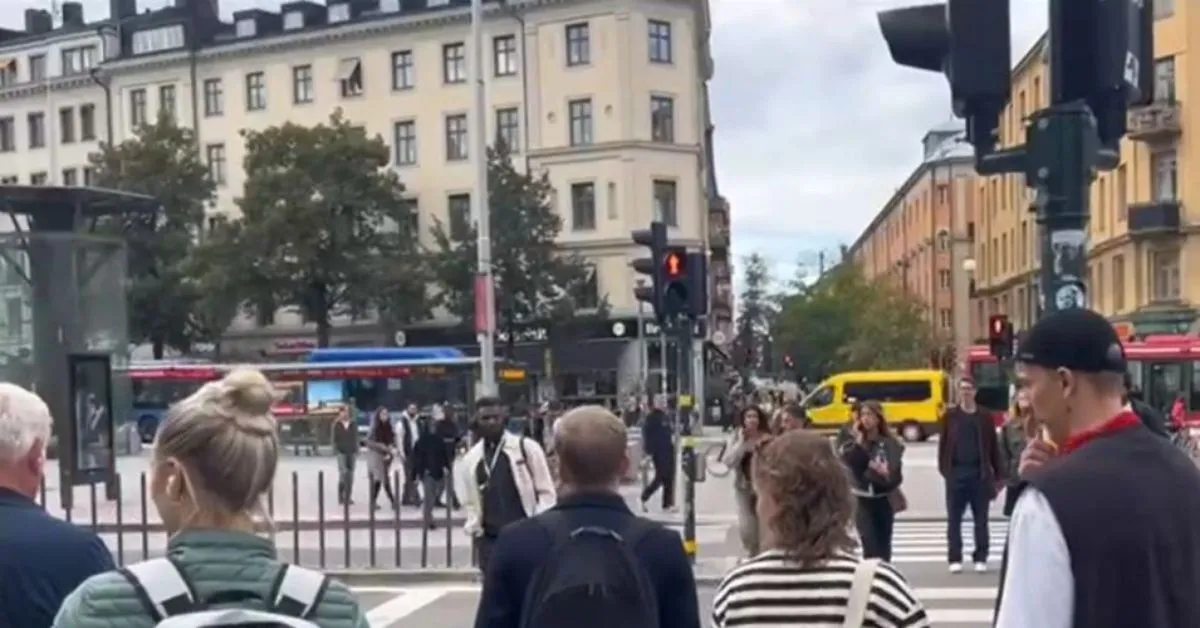
Sweden plans Increase payments to immigrants who leave the country that has been a refuge for the war-weary and persecuted to $35,000 (equivalent to more than 146 million pesos)the government said on Thursday.
The Scandinavian country was for decades considered a “humanitarian superpower” but has struggled to integrate many of its new arrivals over the years.
Migrants who voluntarily return to their home countries from 2026 will be eligible for up to 358,000 Swedish kronor ($35,000), the government, backed by the anti-immigration Sweden Democrats party, said at a news conference.
“We are in the midst of a paradigm shift in our migration policy,” Migration Minister Johan Forssell told reporters as the government unveiled its latest measure to crack down on migration.
Currently, migrants can receive up to 10,000 crowns per adult and 5,000 crowns per child, with a limit of 40,000 crowns per family.
Immigrant groups could not immediately be reached for comment on the change.
“The subsidy has been around since 1984, but it is relatively unknown, it is small and relatively few people use it,” Ludvig Aspling of the Sweden Democrats told reporters. Forssell said only one person had taken up the offer last year.
Aspling added that if more people knew about the grant and its size were increased, more people would likely take the money and run.
He said the incentive would likely appeal to the hundreds of thousands of immigrants who were long-term unemployed.out of work or whose income was so low that they needed state benefits to make ends meet.
“That’s the group we think would be interested,” Aspling said.
Last month, a government-appointed inquiry advised the government against significantly increasing the grant amount, arguing that the expected effectiveness did not justify the potential costs.
The Nordic nation has struggled for years to integrate migrants, and the head of the research, Joakim Ruist, said a significant financial increase would send a signal that migrants are undesirable, further hampering integration efforts.
Other European countries also offer grants as an incentive for migrants to return to their countries of origin.
Denmark pays more than $15,000 per person, compared to $1,400 in Norway, $2,800 in France and $2,000 in Germany.
Struggles for integration
Sweden’s conservative Prime Minister Ulf Kristersson came to power in 2022 with a minority coalition government backed by the Sweden Democrats and has vowed to crack down on immigration and crime.
The Sweden Democrats emerged as the country’s second-largest party with 20.5% support in that election.
Sweden has provided generous foreign development aid since 1970s and has welcomed large numbers of immigrants since the 1990s.
Most of the migrants arriving in Sweden come from countries in conflict, such as the former Yugoslavia, Syria, Afghanistan, Somalia, Iran and Iraq.
In 2015 alone, at the height of the migration crisis in Europe, Sweden welcomed 160,000 asylum seekers, the highest per capita figure in the EU.
With unemployment rates among the foreign-born much higher, the situation had widened Sweden’s wealth inequalities and tested its generous cradle-to-grave welfare system.
The migration crisis of 2015 proved to be a turning point: shortly afterwards, the then Social Democratic government announced that it could no longer continue with its open-door policies.
Since then, left- and right-wing governments have adopted a series of measures to curb migration, including issuing only temporary residence permits to asylum seekerstightening requirements for family reunification and increasing income requirements for work visas for non-EU citizens.
Source: https://www.noticiascaracol.com/mundo/suecia-pagara-a-migrantes-que-regresen-a-sus-paises-de-origen-hasta-34-000-dolares-cb20


